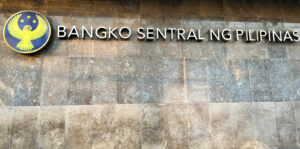US wants to help PHL double the number of its chip-making plants

By Justine Irish D. Tabile, Reporter
AMERICAN COMPANIES are looking to invest in the Philippines’ semiconductor industry with the aim of doubling the number of existing packaging, testing, and assembly facilities, the US Department of Commerce said on Tuesday.
“The US companies realized that our chip supply chain is way too concentrated in just a few countries in the world,” US Commerce Secretary Gina M. Raimondo told a business forum in Makati City on Tuesday.
“Why do we allow ourselves to buy so many chips from only one or two countries? That is why we need to diversify. And that moment is now, and that is an opportunity for the Philippines,” she added.
The Philippines currently has 13 semiconductor assembly, testing, and packaging facilities.
“Let’s double it (the number of facilities). It’s now the moment for growth. Your country has the talent; you have the expertise,” Ms. Raimondo said.
She said the Philippines is at the top of the list for companies looking to diversify and make their supply chains more resilient.
“What do companies want? Democracy, which you have, rule of law, transparency, anti-corruption, reasonable regulations, and also talent,” she said.
Department of Trade and Industry (DTI) Undersecretary and Board of Investments Managing Head Ceferino S. Rodolfo said that Ms. Raimondo’s target of doubling the number of facilities is “doable.”
“This is doable. In fact, our objective is to produce 120,000 (engineers) for the semiconductor industry. So, it’s really anchored on talent development, and even the (US) Presidential Trade and Investment Mission said that the most important attraction of the Philippines is talent,” Mr. Rodolfo said in mixed English and Filipino.
“That is why there is a clear need for skilling and upskilling… those are the things that we must give our attention to,” he added.
The Philippines is one of seven countries that the US is partnering with to diversify its semiconductor supply chain under the CHIPS and Science Act.
Under the law, the US will provide $52.7 billion in federal subsidies to support chip manufacturing and persuade chipmakers with operations in China to relocate to the US or other friendly countries.
“But more than the funds, it’s access to the technical expertise that is important,” Mr. Rodolfo said.
However, American Chamber of Commerce of the Philippines, Inc. Executive Director Ebb Hinchliffe said that the cost of power remains a challenge in making the Philippines an attractive destination for investments in the semiconductor sector.
“The biggest obstacle is the cost of energy and consistent power. You can’t have a wafer factory or a semiconductor factory to go on and off, because that could cost you a million dollars,” Mr. Hinchliffe said.
“So, energy consistency and constant feed are very critical, and the cost of energy remains high. But DTI has taken steps now to let you have a rebate on your income tax if you invest a certain amount to help you cover your energy costs. So all those are very positive steps,” he added.
Electronic products are the Philippines’ top exports in January accounting for 58.2% or $3.42 billion of the total exports.
Last year, the country’s total electronic product exports totaled $41.9 billion, accounting for 57% of the country’s total exports.
MORE PARTNERSHIPSMs. Raimondo led a US Presidential Trade and Investment Mission, composed of executives from 22 US companies that have pledged to invest over a billion dollars in the country.
Some members of the trade mission announced partnerships with the Philippine government and local companies on the sidelines of the business forum on Tuesday.
One of the partnerships announced is with UltraPass ID, which signed a memorandum of understanding with the Department of Budget and Management (DBM) and NOW Corp.
“The expectations will be that we will embed inside existing applications and introduce another layer of login,” said Eric Starr, co-founder and chief executive officer of UltraPass ID.
“In the case of DBM, we will be using biometrics as a form of multi-factor … It introduces a much higher degree of security and authentication,” he added.
Scott McHugh, chief executive officer and chairman of the board of Sol-Go, Inc., said that the company plans to expand its operations in the country.
“We will expand it this year and increase the capacity of the factory by three times, so the personnel count will probably go up to about 30 people, and then we still have the capacity to expand by another three times,” Mr. McHugh said.
At present, he said that the 2,200-square-meter facility located in LIMA Estate has the capacity to produce 15 megawatts, which they will expand to 50 megawatts this year.
“In total, we invested in this factory somewhere around $500,000; we need to add around $200,000 to get to 50 megawatts, and to get to 150 megawatts, we will need probably around $5 million,” he added.
On Monday, the Asian Development Bank, Apl.de.Ap Foundation International, and Legacy EV, LLC signed a memorandum of understanding aiming to foster cooperation in clean mobility and e-vehicle training programs.




